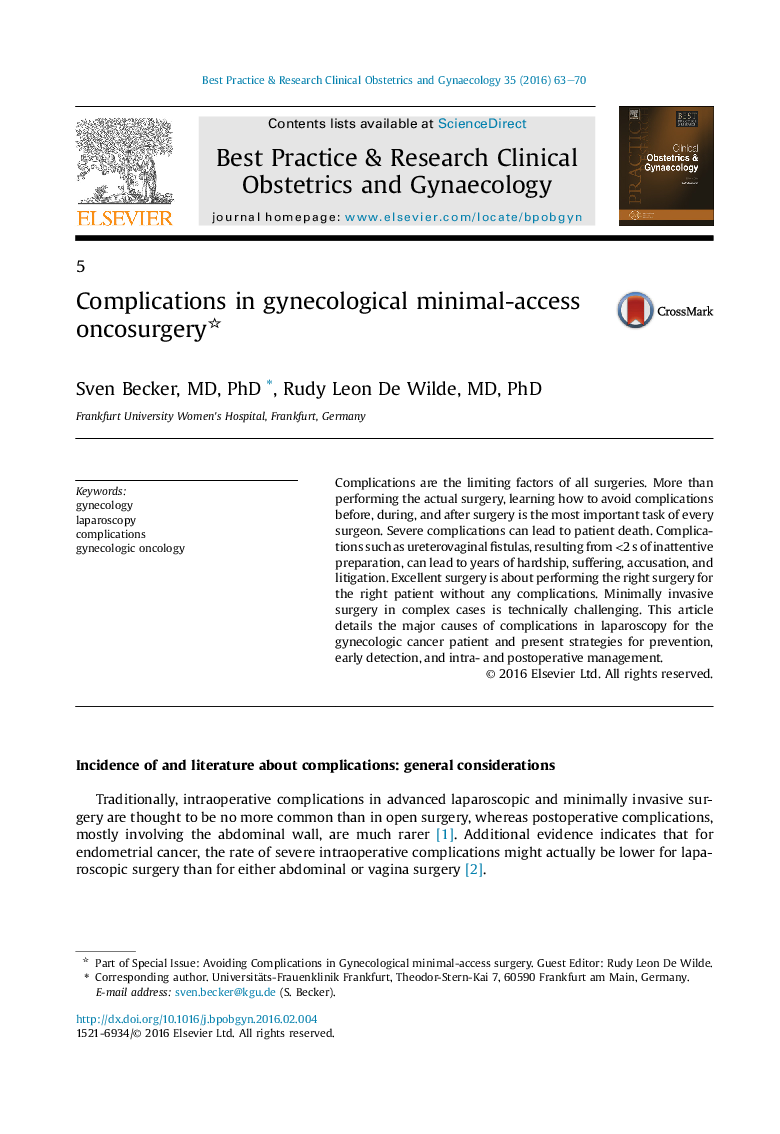| Article ID | Journal | Published Year | Pages | File Type |
|---|---|---|---|---|
| 6169060 | Best Practice & Research Clinical Obstetrics & Gynaecology | 2016 | 8 Pages |
â¢In minimally invasive gynecologic oncology, all classically open surgical procedures for endometrial and cervical cancer can now be performed laparoscopically.â¢A large body of literature has shown laparoscopic oncosurgery to be advantageous.â¢Intraoperative complications are similar or less when compared to open surgery.â¢The proper approach to complication-free laparoscopy requires a different mindset from open surgery.â¢Particularly, improvements of visualization such as three-dimensional imaging systems have the potential to further reduce already low complication rates in advanced laparoscopy cases.
Complications are the limiting factors of all surgeries. More than performing the actual surgery, learning how to avoid complications before, during, and after surgery is the most important task of every surgeon. Severe complications can lead to patient death. Complications such as ureterovaginal fistulas, resulting from <2Â s of inattentive preparation, can lead to years of hardship, suffering, accusation, and litigation. Excellent surgery is about performing the right surgery for the right patient without any complications. Minimally invasive surgery in complex cases is technically challenging. This article details the major causes of complications in laparoscopy for the gynecologic cancer patient and present strategies for prevention, early detection, and intra- and postoperative management.
